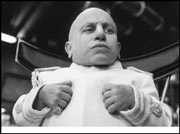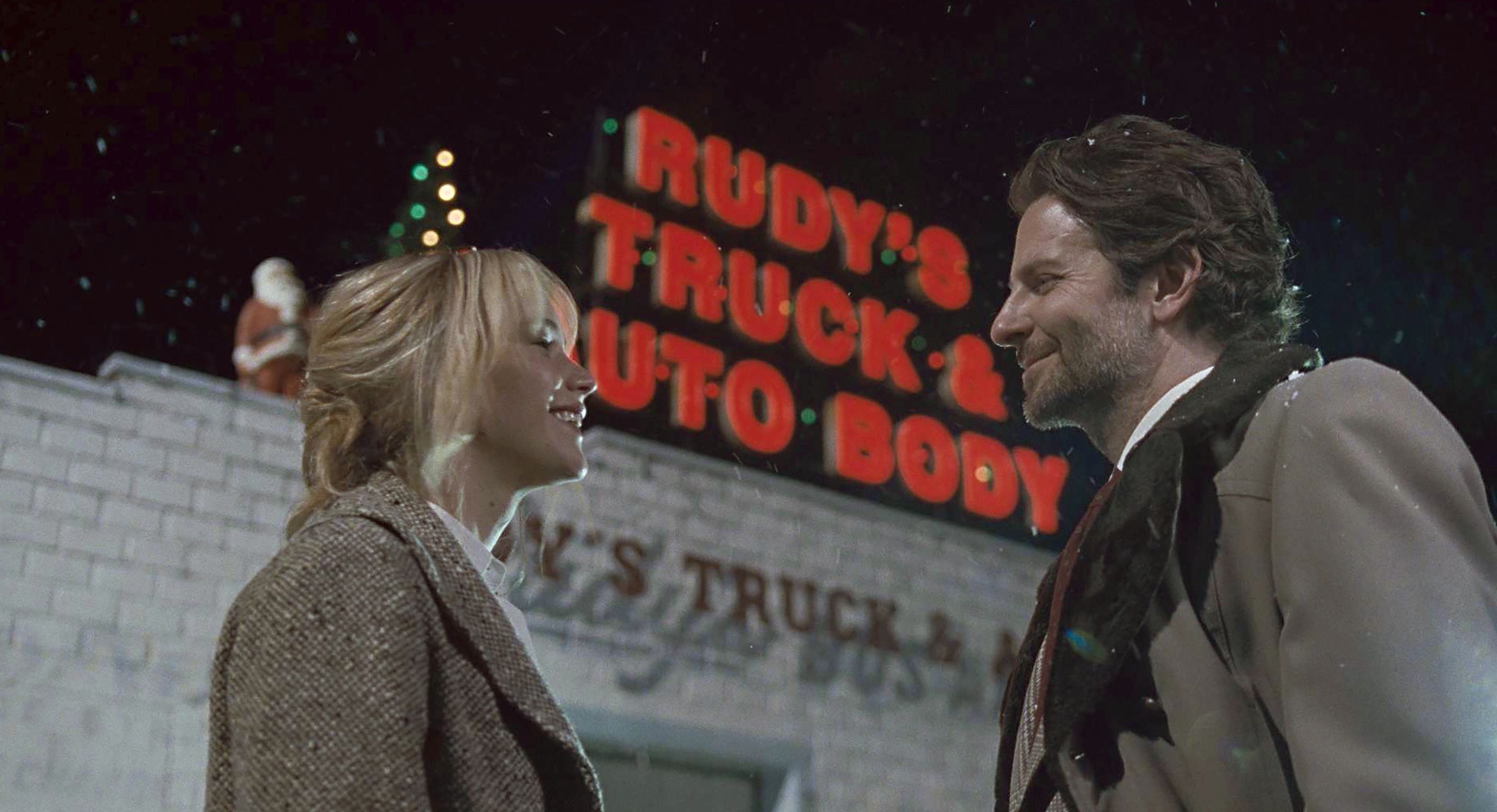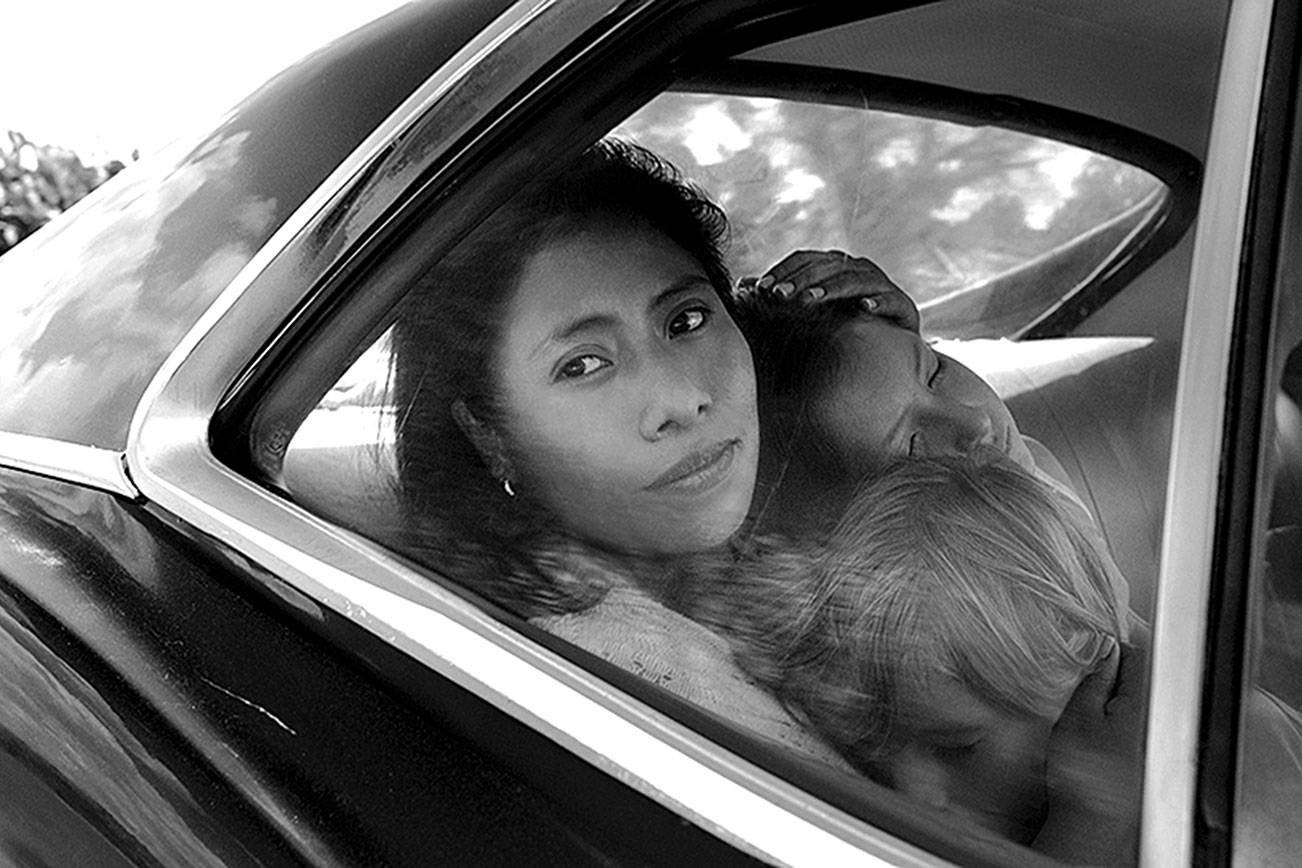Some may flock to see Goldmember for Mike Myers’ multiple roles; some for the sexy, kitschy ’70s fashions worn by Beyonc頋nowles; and some for Michael Caine’s appearance as Austin’s long-lost daddy. For me, the reasons are smaller and singular: Verne Troyer, all 2 feet 8 inches of him. Every hardened film critic has his weaknesses, and Mini-V—as he’s known to his friends—just slays me.
Troyer is no stranger to showbiz. The 33-year-old Michigan native began his craft as a baby stunt double (!) in 1994; soon he was performing minor roles in films including Men in Black and Fear and Loathing in Las Vegas.
His acting career took off, of course, when he appeared as Mini-Me, Dr. Evil’s silent, scaled-down clone companion in the second Austin Powers film, 1999’s The Spy Who Shagged Me. Now he’s a double-threat in Goldmember, portraying both Mini-Me and Mini-Austin.
Why the pint-size appeal of the novelty player? Are we just laughing because he’s so damn tiny? Should we feel guilty about the physical comedy he literally embodies?
No. Troyer represents something important and often overlooked in Hollywood history: the venerable, enduring power of the sight gag. When his oversized shadow first loomed in Shagged Me, followed by his actual, diminutive appearance, the laugh was as pure as anything in silent comedy. All of Dr. Evil’s gigantic egotism—and bungling—is reduced in one deft stroke of synecdoche. The part (Mini-Me) stands for the whole (Dr. Evil); ridicule is captured in caricature, and no caricature is more effective than the physical.
Now I’m not going to suggest a Verne Troyer Film Festival just yet. (That would require revisiting both Harry Potter and How the Grinch Stole Christmas, which is more than any cin顳te should have to bear.) Yet Troyer’s career is a part of a long, little-noticed Hollywood tradition that has used little people—Billy Barty’s preferred term—in two distinct ways.
Mining the seedy underside of the circus, vaudeville, and carnivals, Tod Browning’s 1932 Freaks featured midget romance at the center of its twisted revenge plot. In this dark tradition, small size is freakish and unnatural, betokening a world out of order, as in The Tin Drum (1979), starring the unforgettably fierce David Bennent. No surprise, then, that the dwarf should be used like a prop to signify surreal Hollywood nightmares. David Lynch famously employed a dancing midget—Michael J. Anderson, also seen in Mulholland Drive—in the dream sequences of Twin Peaks (1992), prompting the bitter tirade by a sarcastic dwarf thespian (Peter Dinklage) in 1995’s Living in Oblivion: “This must be a dream—there’s a fucking dwarf in it!”
His outrage is understandable. Nobody of any stature wants to be a cheap, easy signifier of the kooky (Me, Myself & Irene) or the exotic (Moulin Rouge) or the bizarre (Total Recall, where dwarf hookers mix with the other mutants).
The benign flip side to dwarf casting is evident in The Wizard of Oz (1939), with its happy Munchkin fantasy world. This clich頥xtends through Time Bandits (1981), with wonderful Kenny Baker (Fidget), the actor also inside Star Wars robot R2-D2. In the same lineage are Willow (1988, starring Warwick Davis), last year’s Harry Potter, and The Lord of the Rings, where hobbits—though cast with Elijah Wood-sized actors made to look small—are de facto dwarves living in a magical, idyllic, never-never-land utopia.
Transcending both these stereotypes, Mini-Me avoids being a mere figure of freakishness or fantasy. As a clone, he symbolizes science-gone-bad, like Frankenstein’s monster, yet without the tragedy. Instead, Mini-Me comically makes the best of the situation, winning Dr. Evil’s goo-goo eyed love and adoration. He’s like a child or a pet, but one who’s basically manipulating his master. He’s a deadpan rascal, not the jester to Dr. Evil’s Lear but a malevolent accomplice, a chip off the old block.
More important, Troyer simply has charisma. He’s not just a little actor; he’s a little actor you want to watch, someone with star power in his physical presence. In that sense, Troyer’s like Arnold Schwarzenegger (who might uncharitably be called a freak) or Tom Cruise (no matter how many ugly masks he wears in Mission: Impossible, Vanilla Sky, or Minority Report) or Marlon Brando—because, in all cases, you can’t separate the acting from the physicality of the actor.
Such is the legacy of casting to type in Hollywood, where the early silent-movie stars based their personas largely on their looks (having little other means to get them across). Corpulent Fatty Arbuckle, nimble Charlie Chaplin, stone-faced Buster Keaton, mismatched Laurel and Hardy—these players had the ability to inspire laughs with their presence alone. (Turn off the sound when renting some comedy with Tim Allen or Chris Rock or Robin Williams and see how funny they are.)
With his silently mugging Mini-Me, Myers has created a throwback character who would’ve worked just as well in silent-era movie palaces. Incredibly, Mini-Me was originally killed off at the end of Shagged Me, but test-screening audiences demanded his survival (so Myers wisely reshot). Which goes to show how you can’t keep a big man down.










